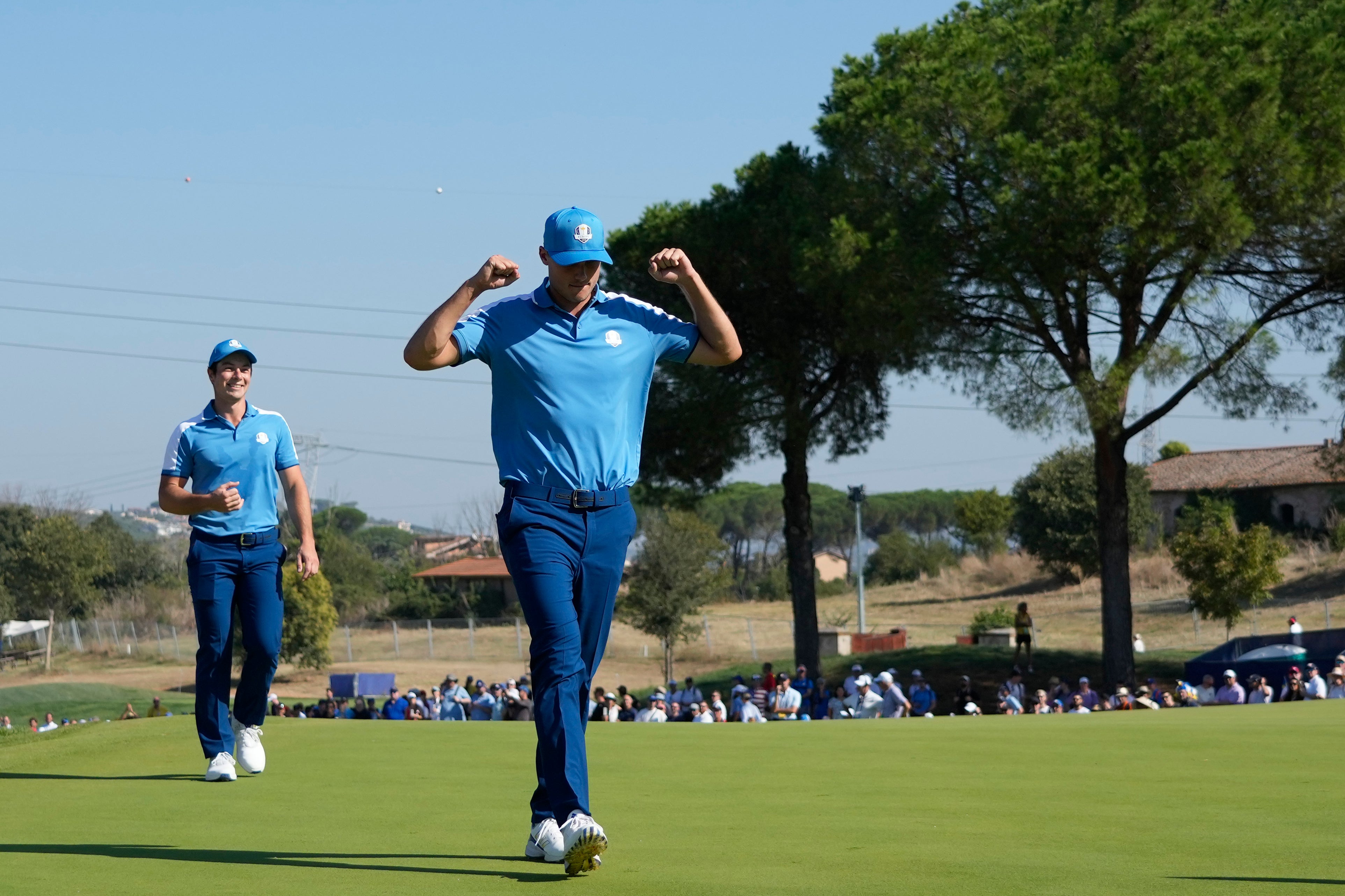
Every now and again the stars align before a major tournament to pit the chest-beating alphas of the sport against one another. This week’s PGA Championship at Valhalla is one of those, as Scottie Scheffler, Rory McIlroy, Brooks Koepka and Bryson DeChambeau all arrive with the form to crush the field.
But amongst the heavyweights is another quiet contender, Ludvig Aberg. The 24-year-old Swede has accomplished an astonishing amount in the first 12 months of his career, earning a place on Europe’s Ryder Cup team where he was unflappable in the heat of a feisty victory over the USA, winning his first PGA Tour event by four strokes soon afterwards, and finishing second on his Masters debut.
The records and statistics tell the story of a golfer equipped with everything he needs to win major titles. Aberg ranks third in driving and 23rd in driving distance. He is the second best tee-to-green player in the world this year behind only the world No 1, Scheffler. He arrives at Valhalla having finished 14th or higher in each of his last four events.

But what makes Aberg unique goes beyond the numbers. This is a man whose name is pronounced differently everywhere he goes and who accepts it with a smile (it sounds like Or-bay in Swedish, but Ludvig A-berg or O-berg is usually introduced on the first tee). This is a man who answers “it is what it is” to almost every question he’s asked. And, most importantly, Aberg understands the value of fun.
“I don’t necessarily view it as my job,” he said on Wednesday, when asked how he seemingly stayed so relaxed when in contention to win at Augusta National. “I think it’s something I have the privilege to be able to do. I try to view it that way, I try to hit different shots and don’t lose the joy of playing golf. A big thing for me is try to enjoy it and try to have fun. Once I’m not having fun, I think that’s when it goes downhill.”
His caddie, Joe Skovron, recently tried to describe Aberg’s serene psyche. “He’s got good perspective, a lot of maturity… that doesn’t mean that he doesn’t get bothered or frustrated, but he’s so good at bringing himself back and realizing that’s how he’s gonna play his best golf. He enjoys himself and just has a great attitude towards golf.”

Aberg will be wearing a knee brace on the course after pulling out of Wells Fargo last week on the advice of his medical team, but he didn’t sound too concerned. “Knee’s good,” he said flatly when asked how he was feeling before his second major tournament. “It was more of a safety concern. It’s not bothering me this week and I’m looking forward to playing.”
On paper the course should suit Aberg, whose biggest strength is his immaculate iron play. The ball tends to sit up and ask to be hit on this Zoysiagrass surface, and Aberg enjoyed playing on it while at university in Texas – he still carries a little Texan drawl in his voice, too.
Aberg has not played Valhalla itself but his caddie, Skovron, was on Rickie Fowler’s bag for a third-place finish at the last PGA Championship there in 2014. More than anything, Valhalla is a test of ball-striking, and Aberg is a natural.

“Hitting the fairways is way more at a premium here than it is at a lot of places,” Valhalla’s PGA manager, Keith Reese, said this week. “You look at the champions who have won here, traditionally they have been very good ball-strikers and really good iron players – Tom Watson and Tiger Woods, obviously. A lot of our green complexes are elevated, so if your iron shots are a little off, they wind up basically being repelled away from the green even more.”
Aberg’s game has no glaring weakness, bar perhaps a more refined touch around the edge of the greens – then again, his approach usually finds the middle of them. The only thing he really lacks against his rivals is the experience of seeing out the job on the Sunday of a major tournament. Scheffler, McIlroy, Koepka and DeChambeau have all been there and done it. But every past champion had a first time, and if we know one thing about Aberg, he will not be fazed when the moment arrives.







